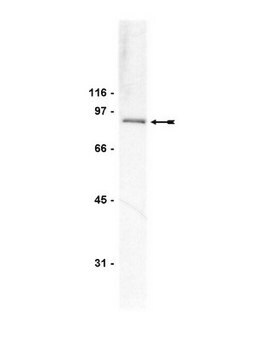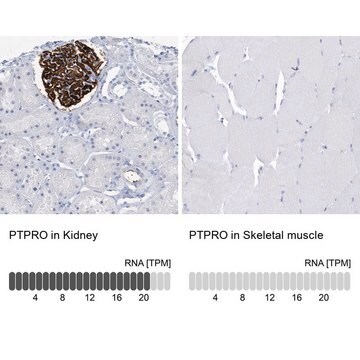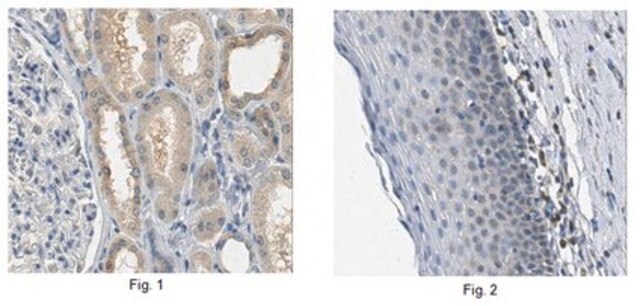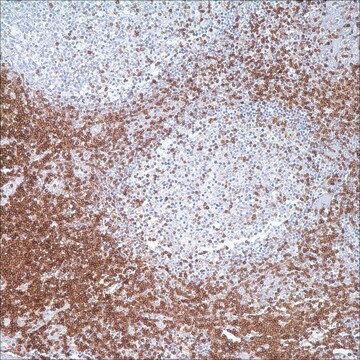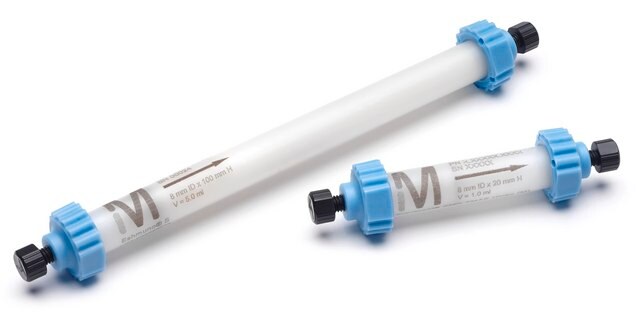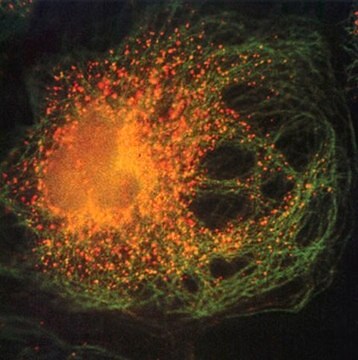MABS1158
Anti-PTPRT Antibody, clone 1F7
clone 1F7, from mouse
Sinónimos:
Receptor-type tyrosine-protein phosphatase T, R-PTP-T, RPTP-rho, RPTPrho, PTPRT
About This Item
Productos recomendados
origen biológico
mouse
Nivel de calidad
forma del anticuerpo
purified immunoglobulin
tipo de anticuerpo
primary antibodies
clon
1F7, monoclonal
reactividad de especies
mouse, human, rat
técnicas
western blot: suitable
isotipo
IgG1κ
Nº de acceso NCBI
Nº de acceso UniProt
Condiciones de envío
wet ice
modificación del objetivo postraduccional
unmodified
Información sobre el gen
human ... PTPRT(11122)
Descripción general
Especificidad
Inmunógeno
Aplicación
Signaling
Developmental Signaling
Western Blotting Analysis: 0.5 µg/mL of this antibody detected the full-length and a cleaved form of PTPRT in brain and liver homogenates from wild-type, but not PTPRT-knockout mice (Courtesy of Dr. Zhenghe Wang, Case Western Reserve University, Cleveland, OH).
Western Blotting Analysis: 2.0 µg/mL of this antibody detected the full-length and a cleaved form of PTPRT in small intestine epithelium homogenate from wild-type mice (Courtesy of Dr. Zhenghe Wang, Case Western Reserve University, Cleveland, OH).
Western Blotting Analysis: A representative lot detected exogenously expressed human PTPRT using transiently transfected HNCC CAL-33 (squamous carcinomas of the tongue) cells expressing wild-type, PTPase domain mutatant (A1022E), or FN3-domain mutatant (P497T) PTPRT, as well as in transfected HNSCC PCI-52-SD1 cells stably expressing wild-type human PTPRT (Lui, V.W., et al. (2014). Proc. Natl. Acad. Sci. U.S.A. 111(3):1114-1119).
Calidad
Western Blotting Analysis: 0.5 µg/mL of this antibody detected the full-length and a cleaved form of PTPRT in mouse brain tissue lysate.
Descripción de destino
Forma física
Almacenamiento y estabilidad
Otras notas
Cláusula de descargo de responsabilidad
¿No encuentra el producto adecuado?
Pruebe nuestro Herramienta de selección de productos.
Código de clase de almacenamiento
12 - Non Combustible Liquids
Clase de riesgo para el agua (WGK)
WGK 1
Punto de inflamabilidad (°F)
Not applicable
Punto de inflamabilidad (°C)
Not applicable
Certificados de análisis (COA)
Busque Certificados de análisis (COA) introduciendo el número de lote del producto. Los números de lote se encuentran en la etiqueta del producto después de las palabras «Lot» o «Batch»
¿Ya tiene este producto?
Encuentre la documentación para los productos que ha comprado recientemente en la Biblioteca de documentos.
Nuestro equipo de científicos tiene experiencia en todas las áreas de investigación: Ciencias de la vida, Ciencia de los materiales, Síntesis química, Cromatografía, Analítica y muchas otras.
Póngase en contacto con el Servicio técnico